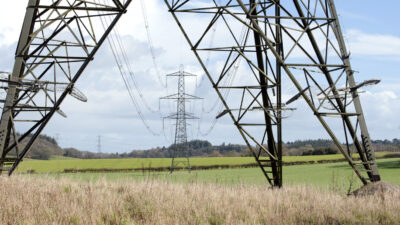EU Directive on antitrust damages: paradise lost for cartels in Belgium?
When a competition authority determines that there has been an infringement of competition law—whether it be a cartel that overpriced goods or services, or an exclusionary conduct such as predatory pricing aimed at forcing competitors to exit the market—anyone harmed by the infringement may file a claim for damages in court against the infringing party. Such proceedings are commonly referred to as ‘follow-on’ damages actions.
The 2014 EU Directive on Private Enforcement1 aims to remove legal and procedural constraints that have restricted the ability of parties affected by breaches of antitrust rules to prove that they suffered harm. To date, such constraints have limited national judges’ ability to quantify the harm from breaches of antitrust rules2.
The Directive required member states to implement the new enforcement regime by the end of 2016; to date, 18 member states have done so. On 12 June 2017 Belgium passed an Act transposing the Directive into Belgian law3 .
Prior to member states implementing the new enforcement regime, the main guidance on breaches of antitrust rules was provided by the 2008 ‘White Paper on Damages Actions for Breach of the European Commission antitrust rules’4. This White Paper was accompanied by quantification guidance,5, which was based on Oxera’s 2009 study for the European Commission on how to determine antitrust damages6.
Member states’ implementation of the Directive is crucial in ensuring effective enforcement of competition law by combining public enforcement by competition authorities and private enforcement by the national judicial authorities. Public enforcement aims at deterrence and punishment through the imposition of remedies—mostly fines—whereas private enforcement, as addressed in the Directive, aims at achieving full compensation for parties harmed by breaches of antitrust rules.
What are the main tools in the Directive to enable more effective private enforcement?
The Directive imposes a number of key tools to incentivise more effective private enforcement, as outlined in the box below.
Main tools in the 2014 EU Directive
- Disclosure through requirements to provide access to documents. This helps harmed parties (the claimants) to prove the existence and the extent of the damage suffered. It may also help defendants in certain aspects of the case, such as the ‘passing-on defence’.
- Presumptions that help the directly and indirectly harmed parties to prove that they were harmed by the breach of antitrust rules. For example, there is a presumption that any cartel causes harm.
- Solidarity of all members of a cartel regarding their responsibility towards the harmed parties.
- Favouring consensual dispute resolution by putting in place incentives to settle. Once implemented into national laws, the provisions of the Directive will significantly increase the risk of claims succeeding, and thereby incentivise the defendants to reach a settlement.
The transposition of the tools described in the box into Belgian law could potentially have a significant impact on the Belgian system. One particular feature is the extension of most of the Act’s substantial provisions to the Belgian class action regime introduced in 2014. This means that a group of consumers who have been harmed as a result of restrictive practices will benefit from the same provisions as in individual claims.
The implications of each of the main tools imposed in the Directive on the Belgian system are discussed below.
Disclosure
The new Belgian system enables courts to require disclosure of evidence that is necessary in order to demonstrate harm. For example, this could include correspondence between cartel members.
This change potentially opens the door to a special disclosure regime for competition law which deviates significantly from the rigid common disclosure regime in Belgium. In the common regime, courts can require the disclosure of only specific documents that are likely to contain the proof of a relevant fact.
Presumptions
As required by the Directive, there are three presumptions in favour of parties harmed by breaches of antitrust rules.
- If the Belgian Competition Authority finds an infringement of competition law, the decision is binding for the judge hearing the action for damages. In other words, the decision of the Competition Authority represents an irrefutable presumption of a breach of antitrust rules. This represents a major change in the Belgian system, as it obliges Belgian judges to accept a decision of the national competition authority—an administrative, not a judicial, body—as a proof of infringement.
- A rebuttable presumption that any cartel causes harm. In some countries courts already apply such a presumption as a matter of common sense. The presumption in the Directive is strongly motivated by economic studies which show that in most cartels surveyed there is a degree of price overcharge7.
- A rebuttable presumption that (a proportion of) the price overcharge induced by a cartel is passed on to entities at the next level of the supply chain.
Does any cartel cause harm?
The crucial question for the effectiveness of the second presumption is whether the Belgian courts will interpret this provision as merely meaning a presumption of the existence of harm, which might then prove a rather symbolic presumption, or as also being a presumption of causality between the cartel infringement and the harm suffered by the claimants.
If the Belgian courts apply the latter interpretation, the presumption that any cartel causes harm, combined with the new disclosure rules, will represent the main change in the Belgian system. Indeed, in the very few cases brought up to now before the Commercial Court in Brussels, the judges have put a heavy burden of proof on the parties claiming damages. This can be illustrated in the two claims against the members of the lifts and escalators cartel, which arose prior to the implementation of the Directive8.
Both damages claims relied on the European Commission’s finding of an infringement by manufacturers of lifts and escalators9. Although the decision contained factual evidence of ‘hardcore’ cartel activities, the Court concluded that there was no evidence of any price overcharge, citing among other arguments, Oxera’s 2009 study for the Commission, which reported other studies showing that 7% of cartel cases result in no overcharge10.
To assess the extent to which the transposition of the EU Directive into Belgian law is likely to make a difference, the new disclosure regime must also be taken into account.
In both lifts and escalators cases handled by the Commercial Court in Brussels, there was no disclosure from defendants. Overcharge analysis was based solely on contract information from the claimants. If the Directive had been implemented at that time, the Commercial Court would have had the power to order access to the defendants’ data.
Is the price overcharge necessarily passed on to entities at the next level of the supply chain?
Regarding the potential for (part of) the price overcharge to be passed on to entities at the next level of the supply chain, the Belgian system transposes the principles from the Directive in relation to the treatment of undertakings along the value chain.
When a direct purchaser claims compensation against a cartel member, the infringing party can raise the ‘passing-on defence’. This means that the compensation due by the infringing party is reduced if the cartel member can prove that the direct purchaser (the harmed party) has passed on all or part of the price overcharge to its customers11. The indirect purchaser benefits from a rebuttable presumption that (part of) the price overcharge was passed on by the direct purchaser.
Solidarity of all members of a cartel
Solidarity between all members of a cartel regarding their responsibility is referred to as the principle of joint and several liability: undertakings that infringed competition law through joint behaviour (typically a cartel) are jointly responsible for the harm caused. In other words, each co-infringing party is liable to compensate for the entire harm, and any harmed party has the right to require full compensation from any of the co-infringing parties.
Consensual dispute resolution
The Belgian system favours settlement in three ways.
- First, the limitation period for bringing an action for damages is suspended during the dispute resolution process (for a maximum of two years).
- Second, any compensation paid as a result of consensual dispute resolution is taken into account in the determination of the damages to be paid to the harmed parties at different levels of the supply chain. For example, if the co-infringing party that reached a settlement with the harmed party is responsible for, say, 30% of the damages incurred by the harmed party, that co-infringing party’s liability will be limited to 30%—i.e. the harmed party can reclaim the remaining 70% of the damages only against those co-infringing parties that were not parties to the settlement.
- Third, when setting the fine, the Competition Authority may consider the compensation paid by the infringing party as a result of a settlement as a mitigating circumstance.
Conclusions
The new Belgian system resulting from the transposition of the 2014 EU Directive on Private Enforcement represents a significant change in the Belgian civil law system—through the new disclosure rules and the presumptions that help those who have been harmed by breaches of antitrust regulation.
The success of the new system in promoting private damages claims in Belgium will depend on the stakeholders: courts, which face the challenge of making the new disclosure regime effective; the Competition Authority, which has to sustain its current high level of public enforcement because most damages claims will be follow-on cases; the undertakings and their corporate lawyers, which will have to evaluate the risks of business-to-business damages claims against their suppliers or competitors; and all those who have been harmed by breaches of antitrust regulation, including consumers’ associations.
1 Directive 2014/104/EU of the European Parliament and of the Council of 26 November 2014 on certain rules governing actions for damages under national law for infringements of the competition law provisions of Member States and of the European Union, Official Journal of the European Union, 5.12.2014 L 349/1.
2 Jenny, F. (2010), ‘A judge’s perspective on the role of economic analysis in damages actions’, Agenda, April.
3 Act of 6 June 2017, Official Journal of the European Union, 12 June 2017, p. 63.596.
4 Commission of the European Communities (2008), ‘White Paper on Damages Actions for Breach of the EC antitrust rules’, COM(2008) 165 final, 2 April.
5 European Commission (2013), ‘Communication of the Commission on quantifying harm in actions for damages based on breaches of Article 101 or 102 of the Treaty on the Functioning of the European Union, Official Journal of the European Union, 13 June 2013; to be read in conjunction with the Practical guide: European Commission (2013), ‘Commission staff working document practical guide quantifying harm in actions for damages based on breaches of Article 101 or 102 of the Treaty on the Functioning of the European Union’, 6 June.
6 Oxera and a multi-jurisdictional team of lawyers led by Dr Assimakis Komninos (2009), ‘Quantifying antitrust damages: towards non-binding guidance for courts’, study prepared for the European Commission Directorate General for Competition, December.
7 For the quantification of damages in the case of exclusionary conduct, see, for example, Oxera (2012), ‘What’s driving damages? The 2 Travel v Cardiff Bus competition law ruling’, Agenda, September.
8 The first claim was brought by the European Union as a purchaser (Brussels Commercial Court Judgment of 24 November 2014, A.R. A/08/06816); and the second claim by the Belgian agency for official buildings and the Flemish government (Brussels Commercial Court Judgment of 24 April 2015, A/12/02291 and A/12/02293).
9 Commission Decision of 21 February 2007 relating to a proceeding under Article 81 of the EC Treaty, Case COMP/E-1/38.823 – PO/Elevators and Escalators.
10 Brussels Commercial Court Judgment of 24 November 2014, A.R. A/08/06816, p. 27.
11 The direct purchaser can claim from the infringing party the recovery of lost profits: if there was no pass-on, the lost profit can be estimated as the reduction in the profit margin; if there was pass-on, the lost profit stems from the lost volumes of sales downstream—i.e. the reduction in quantities (sold by the direct purchaser to indirect purchasers or to final consumers) due to the increase in the sale price by the direct purchaser. For further details, see Niels, G., Jenkins, H. and Kavanagh, J. (2016), Economics for Competition Lawyers, second edition, Oxford University Press, section 9.3.4. The Belgian system takes into account this quantity effect by stating that there is no (pass-on) defence for the loss of profits resulting from the pass-on of the overcharge.
Download
Related

Future of rail: how to shape a resilient and responsive Great British Railways
Great Britain’s railway is at a critical juncture, facing unprecedented pressures arising from changing travel patterns, ageing infrastructure, and ongoing financial strain. These challenges, exacerbated by the impacts of the pandemic and the imperative to achieve net zero, underscore the need for comprehensive and forward-looking reform. The UK government has proposed… Read More

Investing in distribution: ED3 and beyond
In the first quarter of this year the National Infrastructure Commission (NIC)1 published its vision for the UK’s electricity distribution network. Below, we review this in the context of Ofgem’s consultation on RIIO-ED32 and its published responses. One of the policy priorities is to ensure… Read More

